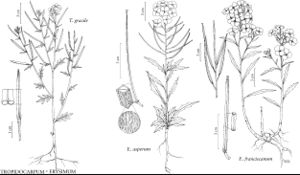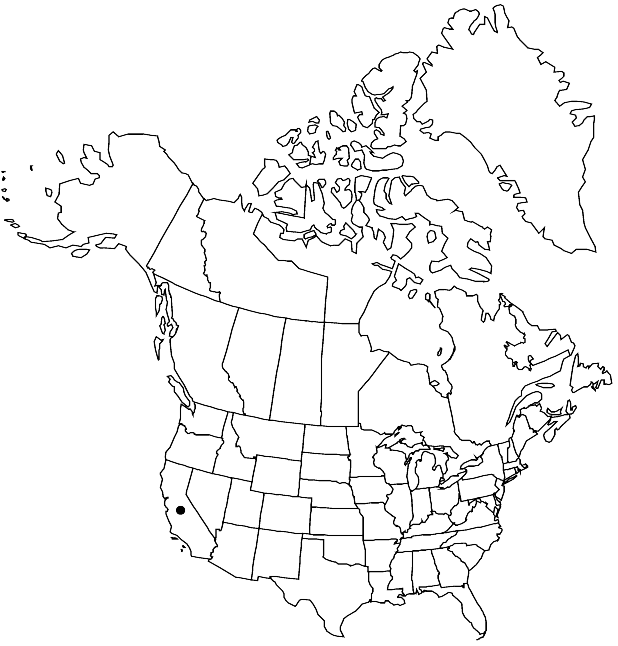Erysimum franciscanum
Aliso 4: 118. 1958.
Perennials or subshrubs. Trichomes of leaves 2-rayed mixed with 3(–5)-rayed ones. Stems erect, often branched distally, (woody at base), 0.6–5(–6) dm. Basal leaves (often withered in suffrutescent plants); blade oblanceolate to oblanceolate-linear, 2.5–17 cm × (2–)3–16(–20) mm, base attenuate, margins sinuate-dentate or dentate, apex acute. Cauline leaves (distal) petiolate; blade margins usually dentate, rarely denticulate. Racemes considerably elongated in fruit. Fruiting pedicels divaricate to ascending, stout, narrower than fruit, 5–17(–22) mm. Flowers: sepals oblong to linear-oblong, 8–12(–15) mm, lateral pair saccate basally; petals yellow to cream, obovate to suborbicular, 14–29 × 5–12(–15) mm, claw 9–17 mm, apex rounded; median filaments 9–15 mm; anthers linear, 2.5–4 mm. Fruits usually ascending, rarely spreading, narrowly linear, straight or curved upward, not or, rarely, slightly torulose, (3.8–)4–11(–14) cm × 2–4 mm, latiseptate, not striped; valves with somewhat prominent midvein, pubescent outside, trichomes (2 or) 3 (or 4)-rayed, glabrous inside; ovules 32–64 per ovary; style cylindrical, slender, 0.5–3.5 mm, sparsely pubescent; stigma 2-lobed, lobes as long as wide. Seeds oblong, 2–3.5(–4) × 1.2–2.2(–2.5) mm; wing distal, present on 1 or both margins. 2n = 36.
Phenology: Flowering Jan–Apr.
Habitat: Serpentine outcrops, coastal scrub or sand dunes, granitic hillsides
Elevation: 0-500 m
Discussion
Erysimum franciscanum is known from Marin, San Francisco, San Mateo, and Santa Cruz counties. Historical records indicate that it grew previously in Sonoma County.
Selected References
None.

